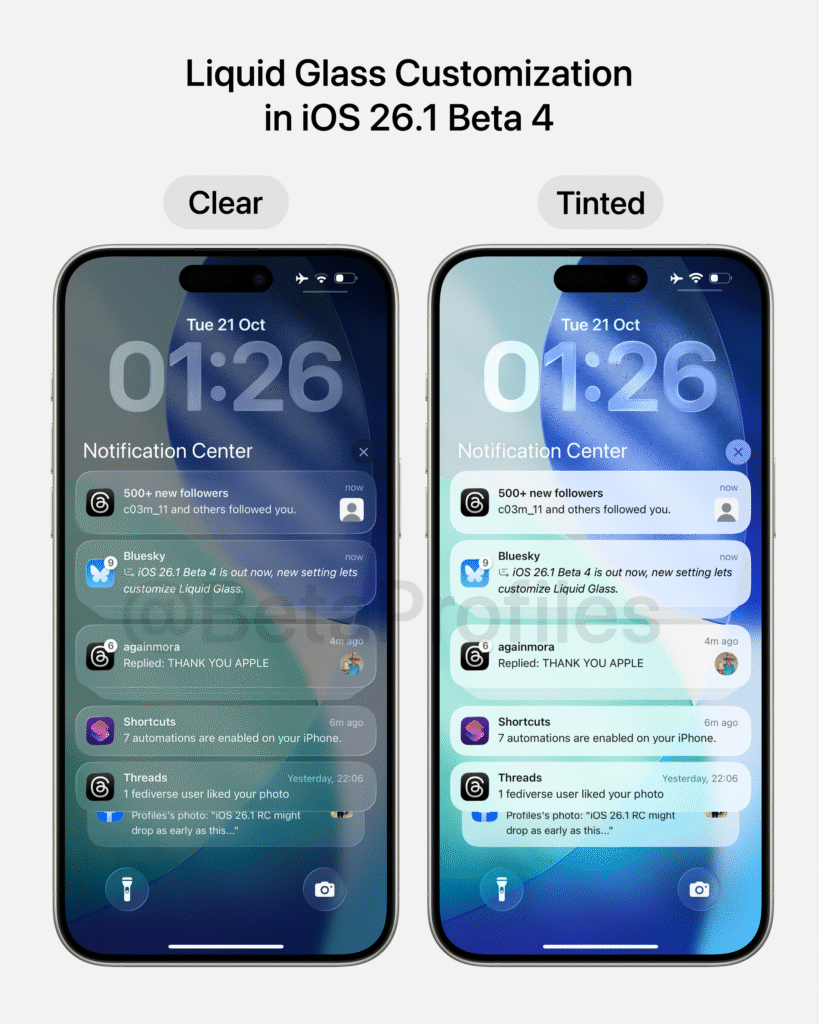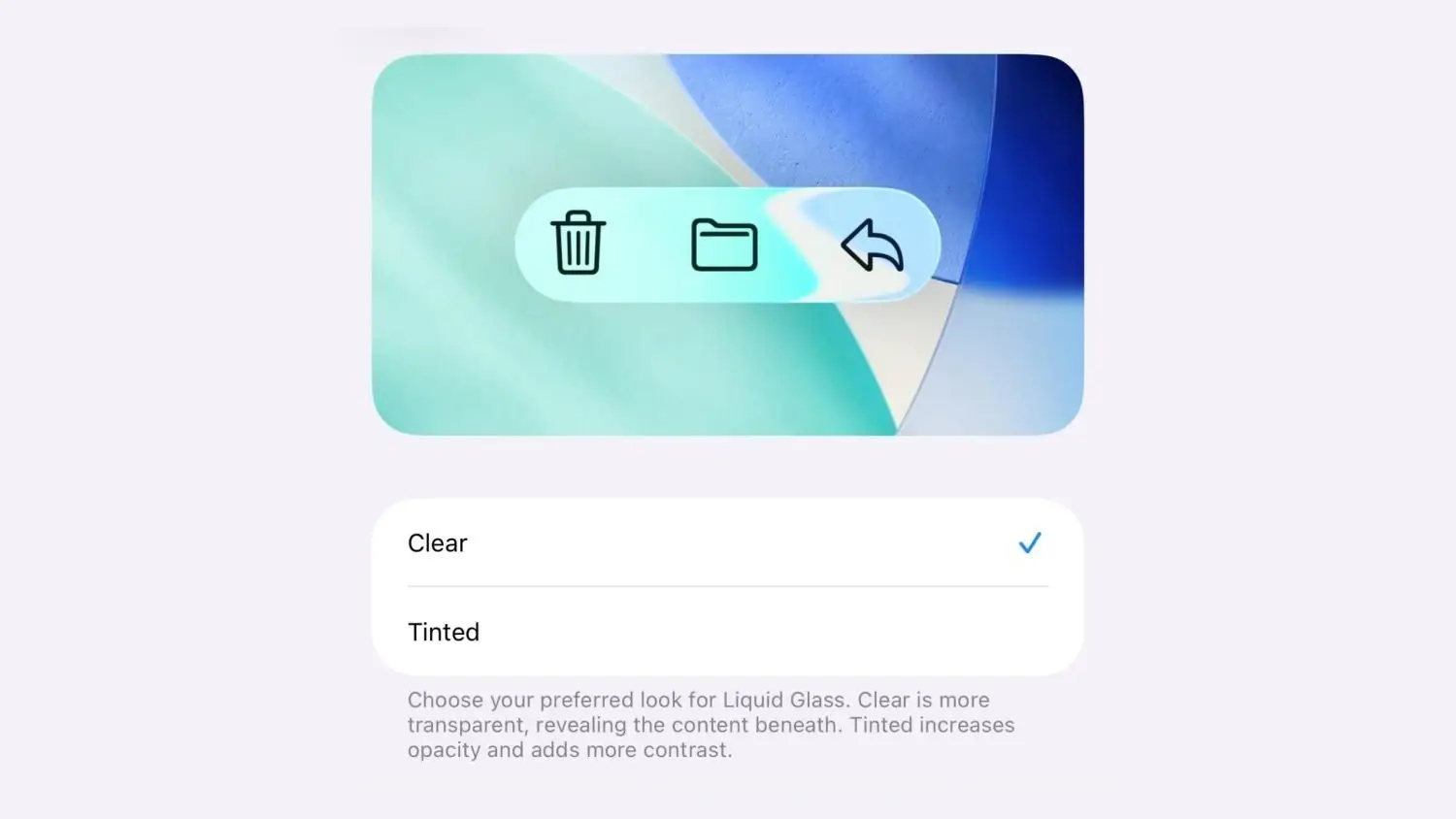Earlier this week, Apple seeded iOS 26.1 beta 4, and in it, not-so-quietly added an option that lets you choose how Liquid Glass appears across the system. You can now decide whether you want the new design language to look “Clear” or “Tinted.” Apple describes Clear as “more transparent, revealing the content beneath,” while Tinted “increases opacity and adds more contrast.”
Take a peek

That is, Clear is Liquid Glass. Tinted isn’t Liquid Glass.
This is Apple listening. It’s Apple reacting to the noise, to the posts and threads and thumbnails stating that Liquid Glass is too much, too odd, and unreadable. It’s the Apple that seeks to meet people halfway. And yet, for all the best of intentions, part of me still misses when Apple didn’t care to meet us at all.
When iOS 26 entered beta testing this summer, it was clear that Apple was struggling to find a middle ground between usability and readability and the ambitions of Liquid Glass. The first beta looked good, but clearly difficult to read against certain wallpapers or overlaying over specific colors and content. Later builds twiddled with opacity, saturation, and layering in tiny steps as Apple tried to find balance.
With iOS 26.1, that search seems to have ended not in discovery, but in surrender. Rather than solving the tension between readability and elegance, or merely quieting the criticism itself, Apple has simply provided users with the choice to turn Liquid Glass off altogether.
There was a time when Apple didn’t give us options. It gave us decisions. The look of iOS 7 and macOS Big Sur weren’t up for debate. You either accepted their brashness or didn’t update. When we mocked losing AirPods, we got used to them, and now they’re necessities. When the notch arrived, the same thing happened. Apple is full of examples where it had us adapt, not because it was cavalier, but because it believed design had to be in control.
That belief, arrogant, perhaps, but moral, was what set Apple apart. The company’s brilliance wasn’t what it produced, but what it refused to compromise on. Steve Jobs liked to say Apple doesn’t do focus groups because “people don’t know what they want until you show it to them.” The magic of the company was that faith: the ability to believe in its vision long enough for the world to catch up.
Liquid Glass is the most visionary visual reimagining of Apple’s platforms ever. It’s not skeuomorphic and not flat. It’s a living design language, responsive, reactive, and uniquely Apple. Which is exactly why it doesn’t need a toggle. When design becomes an adjustment instead of an absorption, it becomes preference, not design.
Granted, there’s another point of view. Accessibility settings are a requirement. And sure, user control is usually not a terrible thing. But this new switch doesn’t have a place in Accessibility, both symbolically and literally, since it lives under “Display & Brightness,” because it improves usability. It’s here because Apple couldn’t stand the heat of having to placate. It’s not a change born of empathy, but fear.
The Apple I miss was unafraid to be hated. It was willing to get it wrong for a while because it was sure that time would prove it right. That hubris has given us some of the most enduring creations in modern culture. The iPhone itself was the result of believing you could strip all the buttons out of a phone. The Apple Watch turned a niche luxury activity into a daily must-have. Each of those concepts asked Apple not to hear, at least for a moment.
Apple used to pull the world along, kicking and screaming. Now it lags, almost asking for permission. The Apple that built the future didn’t do so in committees or by running polls. It decided, stood firm, and showed them that it was right. This new Apple—this toggle-adding, crowd-pleasing, second-guessing Apple—feels allergic to its own reflection.
Apple used to have the courage to make us uncomfortable, secure in the knowledge that clarity would emerge afterward. Now it seems content to make us comfortable, it seems. Maybe that is the price of maturity. Maybe that is what happens to a business when it fears being bold. The truth is, Apple does not transform the world by conforming. It never did.
So the fact that this switch enables you to “dumb down” Liquid Glass gives me more than a feeling of disappointment; it gives me the feeling that the company is having second thoughts about its own good taste.
Yes, maybe I do sound old-fashioned. But I imagine what I’m really yearning for is confidence. The discreet kind that does not feel it needs to explain itself. The kind that said, “You’ll understand later,” and, most probably, we did. I appreciate Apple providing the choice. It’s a thoughtful decision that’s modern and polite, with little harm on the surface.
But I miss the Apple that wasn’t polite. The Apple that did something original, stood up for it, and gave time to vindicate it. Because all too frequently, it did.
